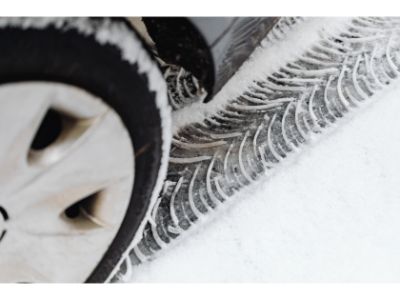How Do Winter Tyres Work?
With temperatures plunging this festive season, you may be considering investing in some winter tyres to keep you and your loved ones safe on the road.

In this blog, we’ll guide you through the questions more of us Brits are asking every year, like what are winter tyres; how do they the work, and are they worth buying?
What are winter tyres?
They’re cold-weather tyres, engineered to offer optimum traction and grip in low temperatures (generally below 7°C), on both wet and dry roads. They’re also equipped to handle roads layered in ice and snow – an essential feature which increases in importance as temperatures plummet.
How do winter tyres work?
As well as containing more rubber than regular tyres, winter tyres are crafted from a softer compound with deeper grooves and sipes built into the tread. In fact, they have up to 10 times as many sipes compared to regular tyres!
Why is this? Well, these grooves and sipes help disperse water and snow, which improves traction and contact with the road as well as reducing the chance of aquaplaning or skidding on snow. The extra rubber and softer compound also help to keep tyres supple in temperatures below 7 °C, when regular tyres would rapidly harden and lose traction. This helps to further improve traction with the road surface, and has a particularly strong effect on braking efficacy.
Effectiveness of winter tyres
Source: Tyresafe.org
This table highlights the stark disparity between the stopping distances in 5°C snowy weather compared to temperatures of around 20°C and clear weather, underlining winter tyres’ superior grip and performance in wintery conditions.
Unfortunately, winter tyres aren’t as effective in summer, as the rubber compound used in these seasonal tyres is only really designed for sub-7°C temperatures. Significantly higher temperatures will further soften the already malleable rubber compound used in winter tyres, making them lose their stiffness and affecting their handling.
In addition to this, winter tyres aren’t really capable of handling the most extreme winter conditions. If you live in a country where several feet of snowfall is an annual occurrence, accessories like chain covers for your wheels are probably necessary.
Are winter tyres worth buying?
Due to their grip-enhancing properties, winter tyres are the standout option in wintery conditions like sleet, ice and snow. But while their chunky treads and water-wicking sipes melt the dangers of winter driving, they’re simply not cut out for summer use. The tyres’ seasonal rubber compound is just that; seasonal, and becomes ineffective above the optimal operating range, leading to woolly steering, reduced handling and a clunky all-round ride.
Ultimately, your decision to invest in winter tyres comes down to the winter forecast, and your budget. Nevertheless, we strongly advise switching to winter tyres in preparation for a long winter journey, or if you’re forced to drive in the worst conditions.
Did you enjoy this blog post? |2 people found this review helpful



 Sign up for SPECIAL OFFERS
Sign up for SPECIAL OFFERS
